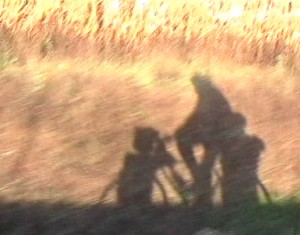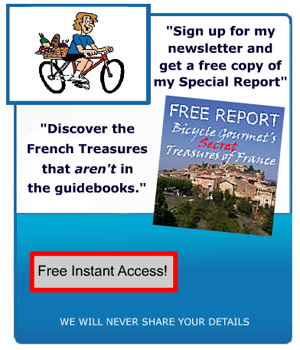Other Recent Articles
A Wine Offer You Can’t Refuse

The Godfather of Corsican Wine – Betcha never thought there was one didya? Well DA BG is sayin’ there is. Only this Godfather is only legally French. But, emotionally and patriotically, He’s Corsican. ( Remember that little isalnd off the coast of France with a Strong Italian heritage? Strong with a capital “S.”)
Eric Asimov of the New York Times has the full monty on the Godfather of Corsican Wine.
“PATRIMONIO, France — Antoine Arena was a promising law student in Paris in 1975 when the Corsican independence movement took a violent turn.
Hearing of armed battles between France and secessionists, Mr. Arena decided to quit law school. In protest, he would return to this small village in the northeast of Corsica, where his family had lived for generations. He would grow grapes and make wine.
“Everyone thought I was crazy,” Mr. Arena recalled as we walked along the steep slope of his Carco Vineyard last month. To the south in the distance, snowcapped mountains loomed. To the west, the cool blue Mediterranean beckoned. The sinuous Corsican coastline is among the most beautiful in the world, but almost no place on the island is immune from the baleful stare of the mountains.
“After I quit law studies, my father didn’t talk to me for a month,” Mr. Arena continued. “Nobody believed in viticulture. The only ones who stayed in viticulture were the ones who couldn’t succeed anywhere else.”

From that unpromising beginning, Mr. Arena went on to become a godfather of Corsican wine. Along with a few other influential pioneers, like Christian Imbert of Domaine de Torraccia and Jean-Charles Abbatucci of Domaine Comte Abbatucci, Mr. Arena has helped make Corsica one of the most exciting and distinctive wine regions in the world.
What makes Corsican wine so unusual? For one thing, the island culture shapes both the personality of the wine and the character of the winemakers. Corsica offers a melting pot of soils: limestone and clay primarily in the north, granite mostly in the south, sandstone and volcanic soils in the center. The climate is both maritime and continental, heavily influenced by the mountains. Winds are constant, including the famous Mistral from the northwest and the hot Sirocco from the south, countering the dampening effect of frequent sudden rains. And the people? Proud, fierce and independent barely begins to describe them.
“Corsica is very complicated,” said Yves Canarelli of Clos Canarelli, who makes pure precise wines from Figari and Bonifacio in the south. “It is French, but it is not. First we are Corsican, then we are French. When you’re an island, you think differently than the continent.”
This tension plays out endlessly on the island, where road signs are written in French and Corsican, but the French is habitually spray-painted over. And it’s evident in Corsica’s host of indigenous grapes, which bear a close genetic resemblance to mainland Italian and French grapes yet offer completely different expressions.

Niellucciu, the leading red grape in the north, is genetically identical to sangiovese, but Mr. Arena’s Morta Maio Patrimonio Rouge, 100 percent niellucciu, tastes like no Chianti. It’s a complex aromatic feast of red fruit and earth, pure, energetic and graceful, with streaks of flowers, herbs and minerals and a touch of funk.
In the south, the leading red grape is sciaccarellu, a facsimile of mammolo, a grape generally used for blending in central Italy. On Corsica, though, it is known for its elegance and complexity — “Corsican pinot noir,” in the words of Sébastien Poly of Domaine U Stiliccionu, who farms about 17 acres outside of Ajaccio in the south. His 2012 Damianu, made entirely of sciaccarellu, is simply beautiful, a savory mouthful of red fruit flavors you don’t want to stop drinking.
All over Corsica, the major white grape is vermentinu, which, of course, is Corsican for vermentino (known also as rolle in southern France). Corsican vermentinu tastes nothing like mainland versions. The 2010 Granit Blanc from Domaine de Vaccelli, not far from U Stiliccionu, is a precise, lip-smacking, stony mouthful, while the 2009 Blanc from Clos Venturi, in the interior of the island near Corte, is voluminous and rich, yet with a lovely mineral tang. From the north, on a granite-and-clay plateau overlooking Calvi, Camille-Anaïs Raoust of Domaine Maestracci makes a fresh, lightly smoky, deliciously austere vermentinu called E Prove Blanc.”
Read more HERE.
THROW ME A BONE HERE, PEOPLE!
What are ya thinkin’?
Paul Cezanne – Impressionist Influencer

French Country Travel Life Artist. Monet. Sisley. Pissarro. Francoise Cariou. And, of course, Cezanne.
While all French Artists had a singular contribution to make, Paul Cezanne’s was one of the most unique and significant; in that he was the bridge between Impressionisim and the Post-Impressionists.
So great was his influence on other artists that Picasso and Matisse proclaimed: “Cezanne is the Father of us all.”
My fellow scribbler Anne Elder has an overview of Cezanne’s life, work, and his particular relation to a mountain:
Between 1902 and 1906, Paul Cézanne walked into the north of Aix-en-Provence twice a day, every day. He would walk up the hill to the quiet Terre des Peintres for its stunning vantage point of Gardanne and Montagne Sainte-Victoire, a beacon of Provence and the subject of many of his paintings.

And now, more than a century after his death in 1906, the impressionist painter’s influence can still be found all over the city: from restaurant and school names, to museum exhibitions, and perhaps most noticeably, a gold plaque-marked walking path through the city, highlighting everywhere from where Cézanne lived to where he died.
Whether you are an expat or a Francophile traveler, it’s easy to walk where Cézanne walked through Aix, even unintentionally. But to truly experience his impact on the city, there are four sites you cannot miss.

Begin at Cézanne’s atelier, which can be found just north of Aix-en-Provence. His workshop has been preserved just as it was when he was painting there in his later years. The walls, decorated with skulls, tiny mannequins and fruits, are the same blueish gray that Cézanne himself mixed for optimal light reflection. And the open panel in the wall, where he would push his larger canvases through to examine them in the light, is still open.

From the atelier, follow directly in Cézanne’s footsteps and walk up the hill to the Terrain des Peintres yourself. Today, the platform is enveloped by his paintings of the famous Montagne Sainte-Victoire and Gardanne, all still visible and peeking through the fields of oliviers.
Cézanne was well into his 60s when he made his voyages to the Terrain – 20 minutes from his atelier and 40 from his apartment – lugging easels and paints and canvases to capture the orange tiled roofs, oliviers, and of course, the mountain herself.
Sainte-Victoire is a sort of calling card for Provence. She is visible from the Aix TGV train station and from bus routes spanning nearly to Marseille. At the summit lies la Croix de Provence, a large cross most visible from the north side of the mountain. The mountain is representative of the region, and of Cézanne’s canon.
When Cézanne was alive and painting in Aix, the owner of the Musée Granet said there would never be any of the painter’s work exhibited as long as he was running the museum. Nestled in Aix’s Quartier Mazarin, it now has a room dedicated to ‘le père de l’art moderne‘ (father of modern art), where ten of his canvases are on display.
Read more HERE.
THROW ME A BONE HERE, PEOPLE!
What are ya thinkin’?
French Cycling Gourmet
The French Cycling Gourmet. That’s how the world knows me. My (severely limited) claim to fame.(Have I had more than my 15 minutes yet?)

